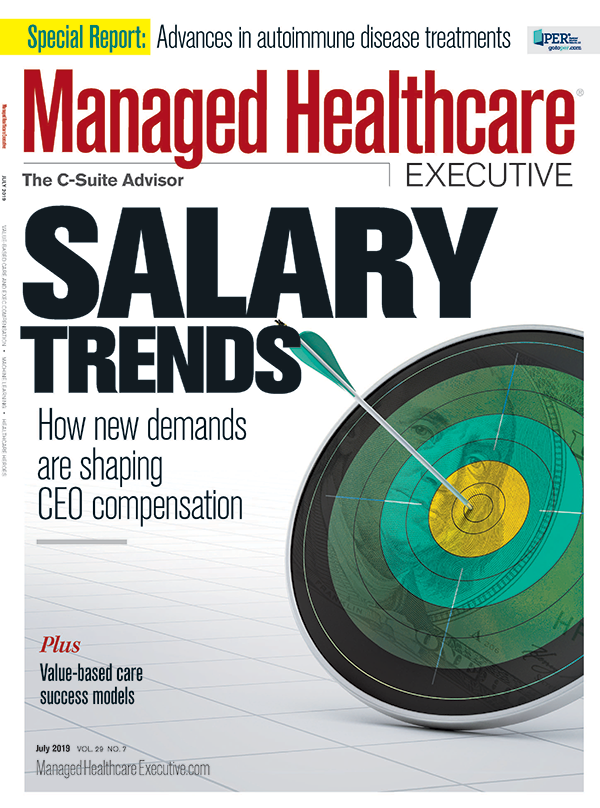The Impact of a Hospital Post-Acute Care Program on Value-Based Care
Medicare’s Bundled Payments for Care Improvement Advanced (BPCI-A) model continues to incentivize value-based care.

Jamie Chang, MD, MBA, FACEP

As Medicare’s Bundled Payments for Care Improvement Advanced (BPCI-A) model continues to incentivize the transition towards value-based care, hospitals are innovating with new services and capabilities to meet its goals.
One of those hospitals, Los Angeles-based CHA Hollywood Presbyterian Medical Center (CHA-HPMC), a subsidiary of CHA Medical Group, was accepted to participate as part of the first cohort of hospitals to improve quality of care as part of Medicare’s BPCI-A initiative.
CHA-HPMC has designed and implemented a Continuing Care Program, a post-acute care program that continues high-quality care during a 90-day period after discharge for Medicare patients with certain diagnoses, such as sepsis. Patients who are 65 and older are especially susceptible to sepsis, the body’s extreme systemic response to an infection.
“The primary goal of the Continuing Care Program is to deliver higher quality patient care, from the perspective of improving patient satisfaction, reducing readmission rates, and getting more patients discharged to home. By effectively achieving these goals, we are also decreasing the cost of care to CMS,” says Jamie Chang, MD, MBA, FACEP, an emergency medicine physician who serves as chief of clinical operations at CHA HPMC and has overseen the design and implementation of the Continuing Care Program. “We are operating during a period of transition from fee-for-service to value-based reimbursement, particularly for the Medicare population.”
Related article: How to Successfully Transition to Value-Based Care
“As more and more financial risk for the costs of care are shifted to hospital providers, there needs to be increasing attention toward the costs that are incurred not just during the acute hospital encounter, but also the costs of care after discharge,” Chang says. “This change to value-based reimbursement is inevitable for traditional Medicare-the only decision for hospitals is whether they will adapt to this change before it is mandated.”
Bundled payments represent one innovative payment model that is designed to move toward value-based care by incentivizing hospitals to enhance coordination and efficiency of care to achieve higher quality outcomes at lower cost, according to Chang.
In the BPCI-A program, CMS sets a “target price” for an episode of care, which includes both the acute inpatient hospitalization plus 90 days after discharge. Different diagnoses are attributed different target prices, and the hospital has the option to choose which diagnoses it wants to follow as part of the program.
“If the cost of care for CHA HPMC’s patients is below the target price for the episode, then CHA HPMC receives payment from CMS for the cost savings in the form of a ‘reconciliation payment’,” according to Chang. “However, if the cost of care for CHA HPMC’s patients is above the target price for the episode, then CHA HPMC must pay a penalty back to CMS.”
The Continuing Care Program includes a robust documentation and coding effort to identify patients as soon as possible after admission to the hospital. A team of patient navigators then meet with the patient at bedside during the acute hospitalization, and coordinate discharge plans with CHA HPMC’s case management team to ensure a successful transition out of the hospital.
“Once the patient is discharged, we have an on-campus care transition clinic to ensure every patient has a PCP-level visit as soon as possible after discharge,” Chang says. “We also have a team of nurses who conduct a home-based evaluation and can support our patients at home 24/7 through the use of a triage phone line and collaborative workflows with the hospital’s outpatient pharmacy to deliver care to the patient at home.”
For patients who are discharged to a post-acute facility-such as a skilled nursing facility (SNF)- CHA HPMC also has a dedicated “SNFist” physician and nurse practitioners who provide an additional level of support for patients in these facilities. This team specializes in managing patient care in the SNF environment, reducing the risk of readmission and promoting a healthy recovery so the patient can return home.
“We also incorporate technology as part of our program, including patient tracking and notification software, and a comprehensive data and performance management platform that gives us intelligent insight into how our patients are doing in the program,” Chang says.
Early results
Early results indicate that CHA HPMC is successfully achieving its program objectives. The following compare our 2017 data with the fourth quarter of 2018:
- 90-day readmission rate. Across all patients included in our seven selected bundles, CHA HPMC improved this metric from 40% to 31%.
- Cost savings. For patients admitted with a diagnosis of sepsis, CHA HPMC has achieved cost reductions that are 14% below the target price that CMS has set for CHA HPMC for this population of patients. “We project that we will receive a $3 million reconciliation payment annually for this bundle alone, helping fund program expenses and also generate incremental net revenue for the hospital,” Chang says.
- Improvement in CMS quality Star Rating measures. By participating in the program, CHA HPMC has been able to use the anticipated reconciliation payments to fund the services, technology, and capabilities to improve overall hospital quality. Specifically, the reduction in the 30-day readmission rate for congestive heart failure (40% to 11%), pneumonia (12% to 9%), and acute myocardial infarction (28% to 18%) directly improve CHA HPMC’s CMS Star Rating and its performance in the CMS Hospital Readmissions Reduction Program.
“We have demonstrated through our Continuing Care Program that we are able to deliver higher quality care to our patients, in terms of both patient satisfaction and improvements in outcome measures, including lower readmission rates and post-acute facility utilization,” Chang says. “And we are able to achieve this at a lower overall cost to Medicare, indicating that this would be a sustainable model of care for the future. Implementing a post-acute program to provide care for patients after discharge requires additional resources, technology and services that hospitals have not traditionally invested in. Innovative payment models, such as BPCI-Advanced, can help to finance the change that is required for us to deliver higher quality care.”
Tracey Walker is content manager for Managed Healthcare Executive.

This week on Tuning Into The C-Suite Briana Contreras spoke with Dr. Scott Hayworth, president and CEO of New York-based CareMount Medical. In this interview, the two discussed the importance of patients staying in contact with their doctors for the sake of reducing public health risks and to discuss ongoing care options with them.
Listen
Eric Levin talks PBMs and how Scripta is Tackling the Market's Challenges for Patients
July 22nd 2020MHE's Briana Contreras spoke with CEO of Scripta, Eric Levin. The two discussed the current state of the pharmacy benefit market and how the Scripta organization has been assisting its clients and their prescriptions prior to the COVID-19 pandemic and during.
Listen